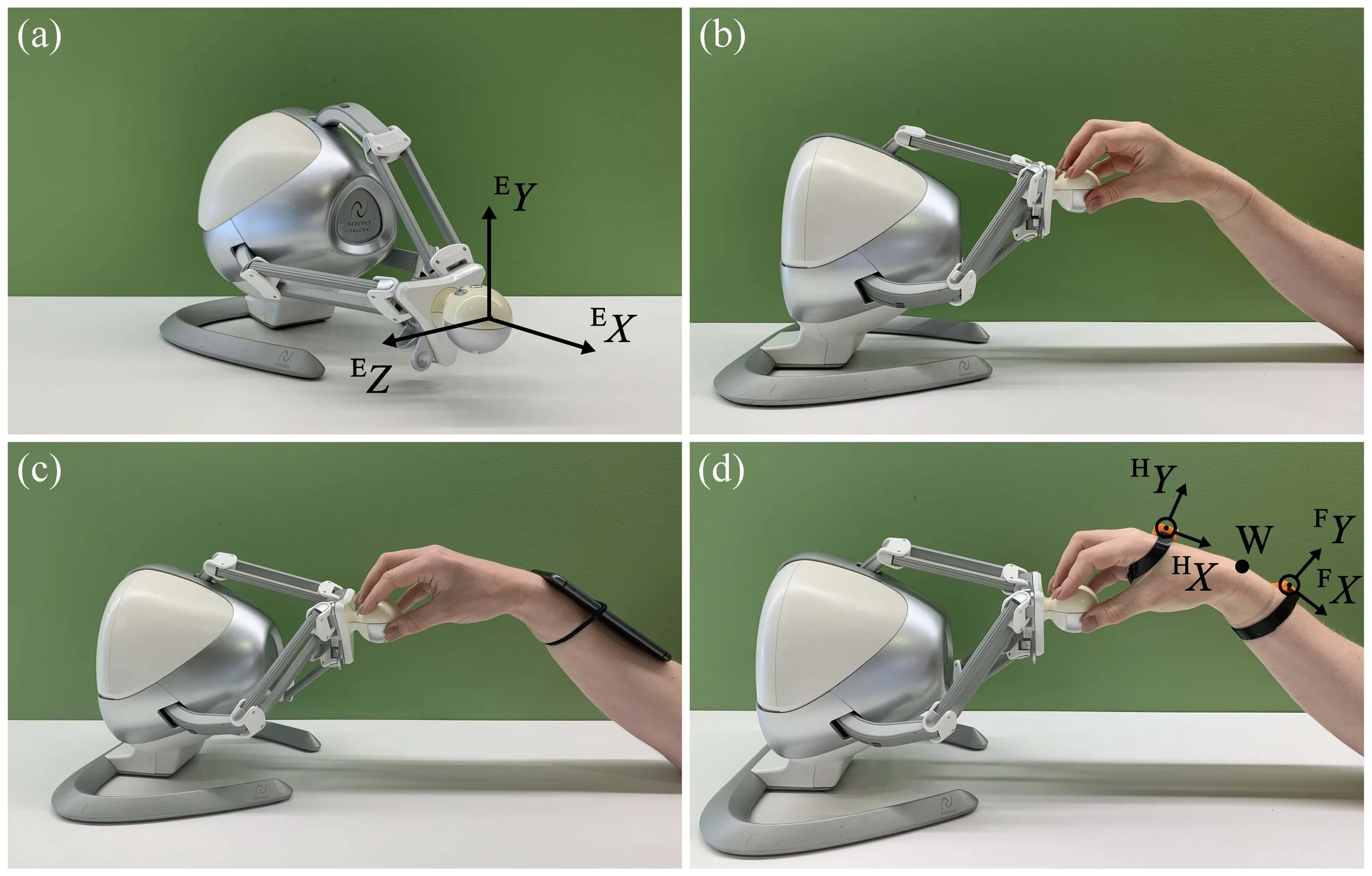Making telerehabilitation smarter: Predicting wrist angles with a smartphone and haptic device
Stroke is one of the leading causes of long-term disability worldwide. Many stroke survivors experience fine motor impairments that make it difficult to perform everyday tasks, from buttoning a shirt to writing or lifting a cup. Rehabilitation plays a crucial role in helping patients regain movement, but access to consistent, high-quality therapy can be limited, especially for those living far from specialized clinics.
In recent years, telerehabilitation has emerged as a promising way to bring rehabilitation into the home. Among these tools, haptic devices stand out for their ability to engage patients in interactive exercises that provide both movement and sensory feedback. However, one major challenge remains: how can we accurately measure a patient’s joint motion while they interact with a haptic device, without relying on expensive or cumbersome motion capture systems?
A Simple Idea with Big Potential
In our recent paper published in Mechatronics, we explored a simple yet effective idea: what if we could use a smartphone, something nearly everyone already owns, to help track wrist motion during telerehabilitation?
We designed an experiment where participants wore a smartphone on their forearm while performing fine motor tasks with a Novint Falcon haptic device. The smartphone’s built-in inertial sensors recorded movement data, while the haptic device captured interaction forces. By combining these two data sources with a machine learning model, we were able to estimate the wrist angle in real time, without using any external motion tracking hardware.
Results
Our linear regression model predicted wrist angles with an accuracy of 88.8%, demonstrating that even a lightweight, low-cost setup can provide valuable information about wrist motion. This approach paves the way toward automatic and remote assessment of joint movements, making fine motor telerehabilitation more accessible and data-driven.
Looking Ahead
This work represents an early but meaningful step toward democratizing rehabilitation technology. By leveraging everyday devices like smartphones, we can lower barriers to care and bring intelligent, sensor-driven therapy to patients wherever they are.
We’re continuing to explore ways to integrate this approach into real-world telerehabilitation systems — refining the models, validating them with clinical populations, and expanding to other types of movements and devices.
If you’re interested in learning more, you can read the full paper here: https://www.sciencedirect.com/science/article/pii/S0957415825001321
